- Durian price on October 22, 2025: Thai durian and Ri6 both increased
- Coffee price on October 22, 2025: World price increases sharply
- Pepper price on October 22, 2025: Stable domestic price
- Rice price on October 22, 2025: Exported rice slightly decreased by 50 VND/kg
- Pig price on October 22, 2025: North and South slightly increased
- Rubber price on October 22, 2025: Mixed fluctuations
Durian price on October 22, 2025: Thai durian and Ri6 both increased
A survey on the morning of October 22 showed that durian prices in the Southwest region continued to remain high, especially for Ri6 and Thai varieties. Ri6 durian type A fluctuated at 80,000 - 88,000 VND/kg, type B at 65,000 - 74,000 VND/kg, and type C at around 40,000 - 45,000 VND/kg.
The price of Thai durian in this area is also quite stable, type A fluctuates between 90,000 - 96,000 VND/kg, type B from 70,000 - 76,000 VND/kg and type C around 40,000 - 46,000 VND/kg.
In particular, Musang King and Black Thorn durians still lead in price, reaching VND110,000 - 140,000/kg and VND200,000 - 220,000/kg, respectively, reflecting high demand from the export market.
In the Southeast region, durian prices have increased slightly in some warehouses. Ri6 durian type A fluctuates at 60,000 - 65,000 VND/kg, type B 40,000 - 45,000 VND/kg and type C around 24,000 - 26,000 VND/kg.
Thai durian still plays a key role with stable prices: type A reaches 95,000 - 100,000 VND/kg, type B 75,000 - 80,000 VND/kg and type C fluctuates between 45,000 - 50,000 VND/kg.
The Thai VIP line increased in price more strongly, type A at 110,000 - 115,000 VND/kg, type B reached 90,000 - 95,000 VND/kg, helping the market become more vibrant at the end of the harvest season.
The Central Highlands region recorded a significant increase in durian prices, especially for Thai durian varieties. Type A fluctuates at 90,000 - 105,000 VND/kg, type B from 70,000 - 75,000 VND/kg, type C around 45,000 - 50,000 VND/kg. Thai VIP durian type A is purchased at 110,000 - 120,000 VND/kg, type B reaches 90,000 - 100,000 VND/kg.
Ri6 durian in the Central Highlands is priced lower than in the West, with type A fluctuating at 46,000 - 50,000 VND/kg, type B from 30,000 - 35,000 VND/kg, type C around 24,000 - 26,000 VND/kg. However, stable supply and increased purchasing demand mean that durian prices in this region are likely to continue to increase in the coming time.
Dak Lak is entering the final stage of the season with an estimated durian output of 392,000 tons, an increase of more than 30,000 tons compared to 2024. With outstanding output, durian prices here are expected to remain high as many businesses boost exports and invest in processing lines.
Domestic enterprises are now focusing on developing frozen durian products to increase value and expand the market. Strict quality control from the orchard to the factory is considered a decisive factor in helping Vietnamese durian prices maintain their competitiveness in the Chinese market and many other importing countries.
Although it is the end of the season, durian prices are expected to remain stable thanks to high consumption and export demand. If supply is not interrupted and quality is maintained, durian prices in the coming time can continue to remain positive, bringing good profits to farmers and exporters.
Coffee price on October 22, 2025: World price increases sharply
In the international market, the price of Robusta coffee for November 2025 delivery on the London exchange increased by 104 USD/ton to 4,620 USD/ton. The January 2026 futures contract also increased by 110 USD/ton to 4,574 USD/ton. This is an impressive increase, reflecting strong demand and limited supply from major exporting countries.
On the New York floor, the price of Arabica coffee for delivery in December 2025 increased by 7.5 cents/lb, reaching 413.55 cents/lb; the contract for delivery in March 2026 increased by 7.95 cents/lb, reaching 391.25 cents/lb. The price of Brazilian Arabica coffee also recorded a continuous increase, fluctuating between 422.3 and 492.4 cents/lb, with the September 2026 delivery period increasing the most by 2.54%, reaching 422.3 cents/lb.
Domestically, coffee prices remained stable after a series of slight increases. In the Central Highlands region - the largest coffee growing region in the country - the average coffee price reached 114,300 VND/kg.
Specifically, coffee prices in Dak Lak - the locality with the highest price in the region - are trading at 114,500 VND/kg. In Gia Lai , coffee prices are stable at around 114,000 VND/kg, while Lam Dong remains at a lower level, around 113,500 VND/kg. Overall, the domestic coffee price market remains positive, despite the abundant supply from the old crop.
Currently, domestic coffee prices have not fluctuated significantly compared to the previous session. The market is temporarily stagnant because the supply from the old crop is still high, while the new harvest has not officially begun.
Experts predict that coffee prices may continue to remain high in the coming time as import demand from Europe and the US increases, while dry weather in Brazil and Vietnam may affect new crop yields.
Although stable, coffee prices are expected to increase again when supporting factors such as strong exports, high transportation costs and reduced output in some major producing countries begin to have a clear impact. If this trend continues, Vietnam is likely to continue to maintain its leading position in the world in Robusta exports in the remaining months of the year.
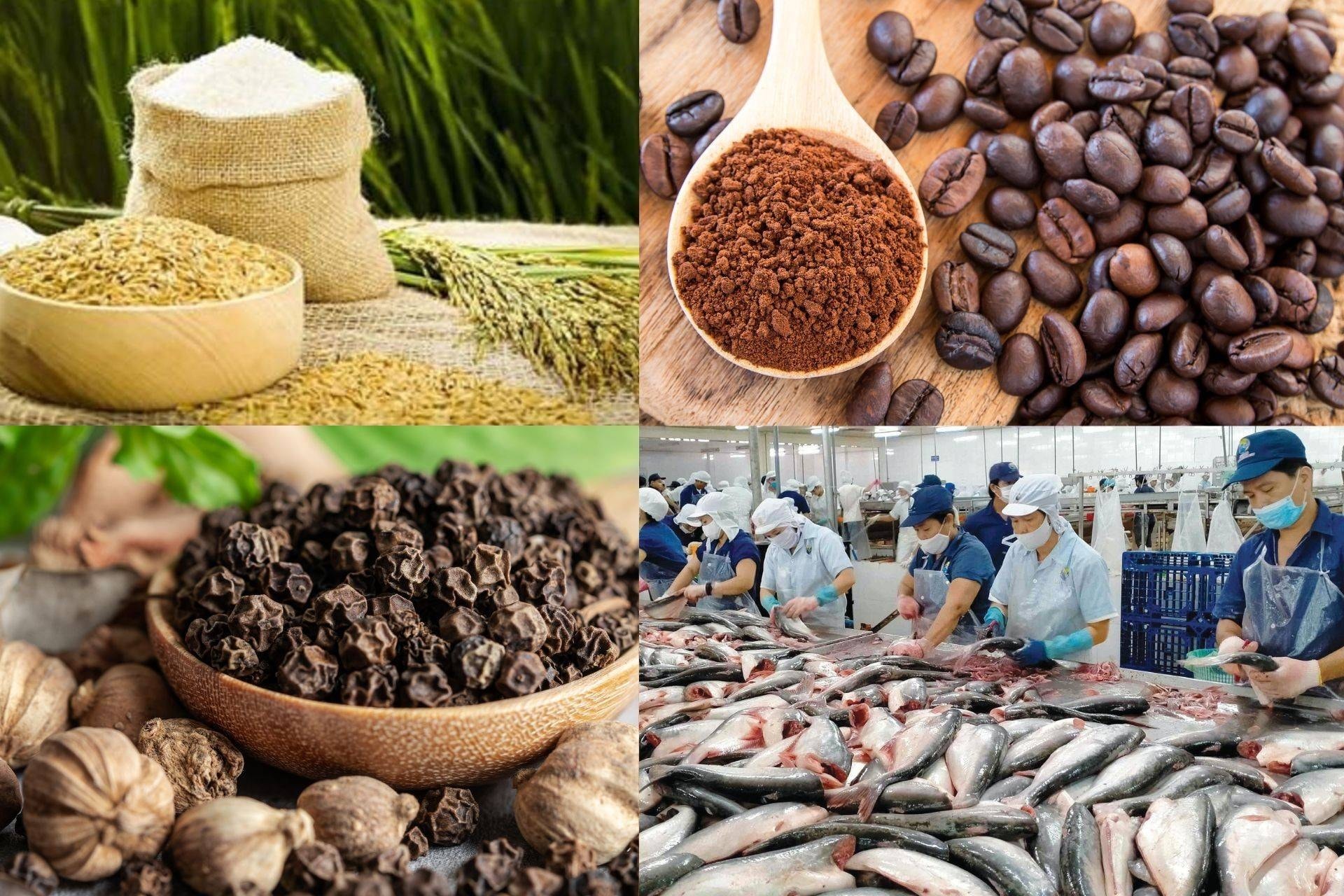
Pepper price on October 22, 2025: Stable domestic price
On the morning of October 22, domestic pepper prices continued to remain stable compared to the previous session. The average purchase price in key areas reached about 145,400 VND/kg. This is a period when the pepper price market is relatively quiet when domestic trading demand has not changed much.
Specifically, pepper prices in Dak Lak and Lam Dong remained at 146,000 VND/kg - the highest in the region. In Gia Lai, pepper prices were at 144,000 VND/kg, the lowest in the region. Ho Chi Minh City and Dong Nai recorded pepper prices at 145,000 VND/kg. With a stable market, the domestic market is assessed to be in the accumulation phase before entering the peak export cycle at the end of the year.
In the international market, pepper prices have slightly adjusted in some regions. In Indonesia, Lampung black pepper price was traded at 7,229 USD/ton, down 0.01% compared to the previous session; while Muntok white pepper price decreased 0.03% to 10,088 USD/ton.
In Malaysia, pepper prices remained stable, with ASTA black pepper at $9,500/ton and white pepper at $12,500/ton. Meanwhile, in Brazil, pepper prices remained around $6,100/ton, unchanged from yesterday.
Regarding exports, Vietnam's pepper prices continue to remain high compared to many countries in the region. Specifically, black pepper of 500 gr/l is at 6,400 USD/ton, 550 gr/l is at 6,600 USD/ton, while white pepper prices reach 9,050 USD/ton.
Despite no major fluctuations, Vietnam’s pepper prices are still considered stable thanks to steadily increasing export demand from European and Middle Eastern markets. Processing and exporting enterprises are taking advantage of this opportunity to sign more long-term contracts, preparing for the peak season at the end of the year.
Experts predict that domestic pepper prices may increase again by the end of the fourth quarter when import demand recovers and supply gradually narrows. With the international market still in shortage, Vietnamese pepper prices are expected to continue to maintain their competitive position in the global market.
Rice price on October 22, 2025: Exported rice slightly decreased by 50 VND/kg
On the morning of October 22, domestic rice prices recorded a quiet and stable trend compared to the beginning of the week. In the Mekong Delta region, fresh rice prices remained unchanged as the main rice varieties remained at familiar levels.
According to the Department of Agriculture and Environment of An Giang province, IR 50404 rice (fresh) fluctuates at 5,000 - 5,200 VND/kg; OM 5451 rice is at 5,400 - 5,600 VND/kg; Dai Thom 8 and OM 18 rice remain at 5,800 - 6,000 VND/kg. High-quality rice varieties such as Nang Hoa 9 reach 6,000 - 6,200 VND/kg, OM 308 rice fluctuates at 5,700 - 5,900 VND/kg.
In other localities such as Can Tho, Dong Thap, Vinh Long or Tay Ninh, rice prices have remained almost unchanged. Transactions remain at a moderate level, due to sparse purchases by traders, slow arrival of autumn-winter crop supply, and the market waiting for new signals from exports.
In the domestic market, the price of raw rice for export decreased slightly by 50 VND/kg compared to the beginning of the week. Specifically, IR 504 rice is now 7,900 - 8,000 VND/kg, while OM 18 rice remains at 8,500 - 8,600 VND/kg. OM 5451 rice is traded at 8,100 - 8,200 VND/kg, OM 380 rice is at 7,800 - 7,900 VND/kg, and CL 555 rice fluctuates at 8,150 - 8,250 VND/kg.
Finished rice remains unchanged: OM 380 is at 8,800 - 9,000 VND/kg, finished IR 504 rice is stable at 9,500 - 9,700 VND/kg. In An Giang and Dong Thap, large warehouses are buying sparingly, with little incoming goods, causing rice prices to not have any significant adjustments.
In the consumer market, retail rice prices remained stable today. Nang Nhen rice continued to maintain its highest level of VND28,000/kg, Huong Lai rice was at VND22,000/kg, and regular rice fluctuated between VND13,000 and VND15,000/kg.
Fragrant rice varieties such as Jasmine, Nang Hoa, Thai long grain and Taiwanese are priced at 16,000 - 22,000 VND/kg depending on the type. Thai Soc rice remains at 20,000 VND/kg, Japanese rice remains at 22,000 VND/kg. By-products such as grade 2 broken rice fluctuate at 7,200 - 7,300 VND/kg, while bran is stable at 9,000 - 10,000 VND/kg.
In the international market, Vietnam's rice export prices remain stable. According to the Vietnam Food Association (VFA), 5% broken fragrant rice fluctuates between 420 and 435 USD/ton, 100% broken rice is at 309 and 313 USD/ton, and Jasmine rice is stable at around 486 and 490 USD/ton.
Import demand from traditional markets such as the Philippines and Indonesia remains steady, while rice prices from Thailand and India remain high, helping Vietnamese rice maintain its competitiveness.
In general, domestic rice prices on October 22 remained stable. Exported raw rice prices decreased slightly, while finished rice and retail prices remained stable. In the world market, Vietnamese rice prices continued to remain stable, with regular transactions.
Experts predict that rice prices may increase slightly in the coming time if import demand from Asia increases again at the end of the month, especially from major partners such as China and Indonesia.
Pig price on October 22, 2025: North and South slightly increased
This morning, the price of live pigs in the Northern region recorded a slight increase in many localities, with the price fluctuating from 52,000 - 55,000 VND/kg. Tuyen Quang and Phu Tho increased by 1,000 VND/kg, bringing the purchase price to 54,000 VND/kg.
Bac Ninh, Hanoi and Hung Yen provinces all increased by VND1,000/kg, reaching the highest level in the region at VND55,000/kg. Meanwhile, the price of live pigs in Thai Nguyen, Lang Son, Quang Ninh, Hai Phong, Ninh Binh, Lao Cai, Lai Chau, Dien Bien and Son La remained stable at VND52,000 - VND54,000/kg, with Lai Chau having the lowest level of VND52,000/kg.
This slight increase shows that the price of live pigs in the North is showing signs of recovery thanks to improved purchasing demand and more stable supply compared to the beginning of the month.
In the Central and Central Highlands, the price of live pigs today did not record significant fluctuations, remaining stable in the range of 50,000 - 53,000 VND/kg. Thanh Hoa and Nghe An continued to lead the region with 53,000 VND/kg.
In Ha Tinh, Thua Thien Hue and Lam Dong, the price of live pigs remained at VND52,000/kg. Quang Tri, Da Nang, Quang Ngai and Khanh Hoa provinces maintained the price at VND51,000/kg, while Gia Lai and Dak Lak had the lowest price in the region, reaching VND50,000/kg.
In the Southern region, the price of live pigs today recorded a slight increase, creating a more vibrant trading atmosphere than in previous days. The common price ranged from 50,000 - 52,000 VND/kg.
Dong Thap, Ca Mau and Can Tho all increased by VND1,000/kg, reaching VND51,000/kg. An Giang and Vinh Long also adjusted the price up similarly, to VND52,000/kg and VND50,000/kg, respectively.
Key localities such as Dong Nai, Tay Ninh and Ho Chi Minh City continue to maintain the highest price in the region at VND52,000/kg. The price of live pigs in Vinh Long remains the lowest, reaching VND50,000/kg. This slight increase shows that the Southern market is recovering after a period of sluggish trading.
According to experts, pig prices may continue to increase in the short term thanks to a gradual recovery in consumption demand before the end of the year. However, the market is still under competitive pressure from large supplies, requiring farmers to closely monitor fluctuations to have appropriate sales plans.
Rubber price on October 22, 2025: Mixed fluctuations
At the end of the trading session on the morning of October 22, world rubber prices recorded mixed developments among major markets. In Thailand, rubber futures for November increased slightly by 0.2% to 66.13 baht/kg. In China, rubber prices also increased by 0.3% to 14,105 yuan/ton, reflecting that purchasing demand from tire factories has begun to improve.
In contrast, rubber prices in Japan fell 0.1% to 299.6 yen/kg. On the SICOM exchange (Singapore), the contract for delivery in November 2025 fell 0.6% to 170.3 US cents/kg. On the OSE exchange, the contract for delivery in March 2026 was flat at 302.9 yen/kg, equivalent to 2.01 USD/kg. Meanwhile, the Shanghai exchange recorded a slight decrease of 10 yuan to 14,810 yuan/ton (2,079 USD/ton).
According to Japan Exchange Group, international rubber prices are under downward pressure due to abundant supply from ASEAN countries - the region that accounts for the majority of global rubber production. In addition, China's slowing economy and weak tire demand have also caused rubber prices to lack the strength to increase.
Crude oil prices edged lower amid rising US-China trade tensions, dampening the outlook for oil-related commodities. Since natural rubber competes directly with synthetic rubber (made from oil), oil price movements have a significant impact on global rubber prices.
In addition, the Thai Meteorological Department warned of heavy rain and flash floods from October 21-25, which could disrupt harvests, thereby affecting rubber supplies in the short term.
Domestically, rubber prices on the morning of October 22 continued to remain stable at major manufacturing companies. At MangYang Company, latex rubber prices were maintained at around VND398/grade 1 TSC. Phu Rieng Company offered to buy mixed latex at VND390/DRC and latex at VND420/TSC.
Ba Ria Rubber Company quoted the price of latex at 415 VND/TSC degree/kg (applied to TSC degree from 25-30), DRC coagulated latex (35-44%) at 15,000 VND/kg, an increase of 800 VND; raw latex reached 20,000 VND/kg. In Binh Long, the rubber purchase price at the factory was 422 VND/TSC/kg, and at the production team was 412 VND/TSC/kg; mixed latex (DRC 60%) remained at 14,000 VND/kg.
Experts predict that rubber prices will continue to fluctuate slightly in the short term due to the impact of weather factors and the lack of a strong recovery in global demand. However, if the weather in Thailand and Indonesia continues to be unfavorable, the disruption in supply could help rubber prices rebound in the final period of the year.
Domestically, rubber prices are likely to remain stable thanks to large enterprises proactively regulating output and controlling purchasing costs well.
Source: https://baonghean.vn/gia-nong-san-hom-nay-22-10-2025-gia-lua-gao-xuat-khau-giam-nhe-10308660.html








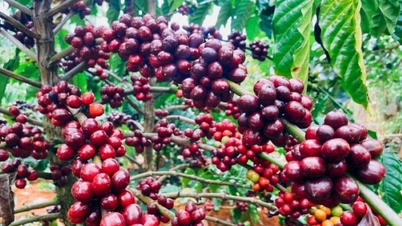

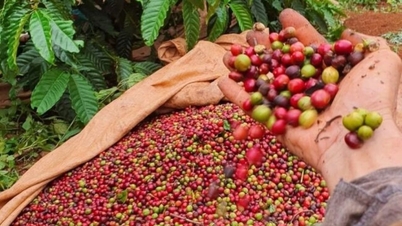
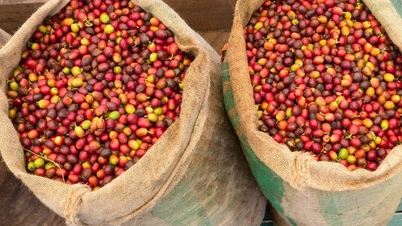

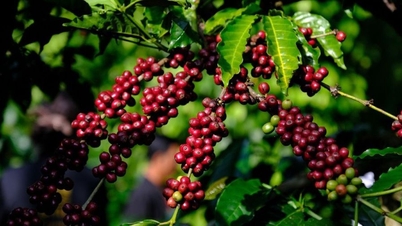
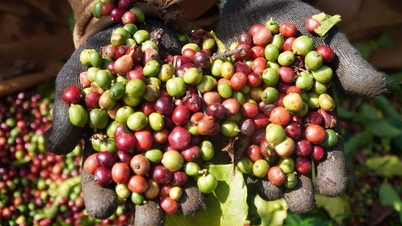


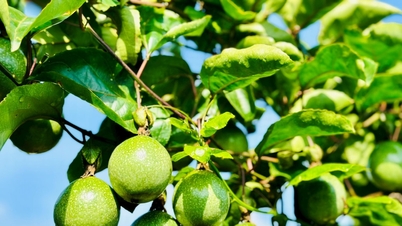


















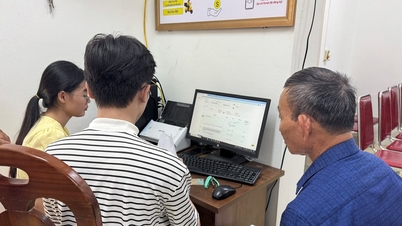

![[Photo] Prime Minister Pham Minh Chinh received Mr. Yamamoto Ichita, Governor of Gunma Province (Japan)](https://vphoto.vietnam.vn/thumb/1200x675/vietnam/resource/IMAGE/2025/10/21/1761032833411_dsc-8867-jpg.webp)
![[Photo] Da Nang residents "hunt for photos" of big waves at the mouth of the Han River](https://vphoto.vietnam.vn/thumb/1200x675/vietnam/resource/IMAGE/2025/10/21/1761043632309_ndo_br_11-jpg.webp)























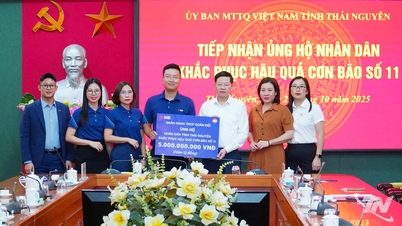
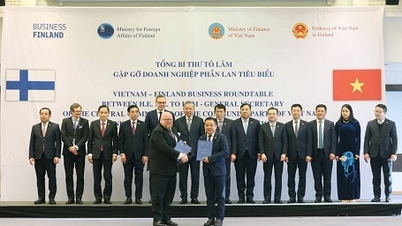

























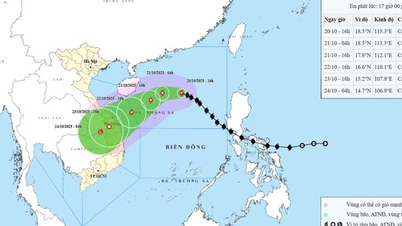
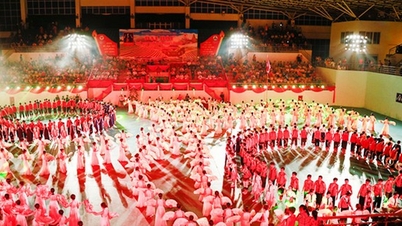

























Comment (0)